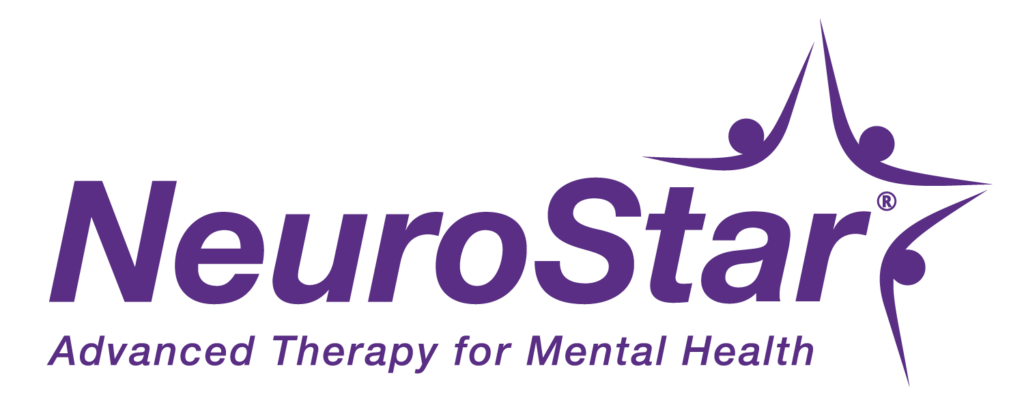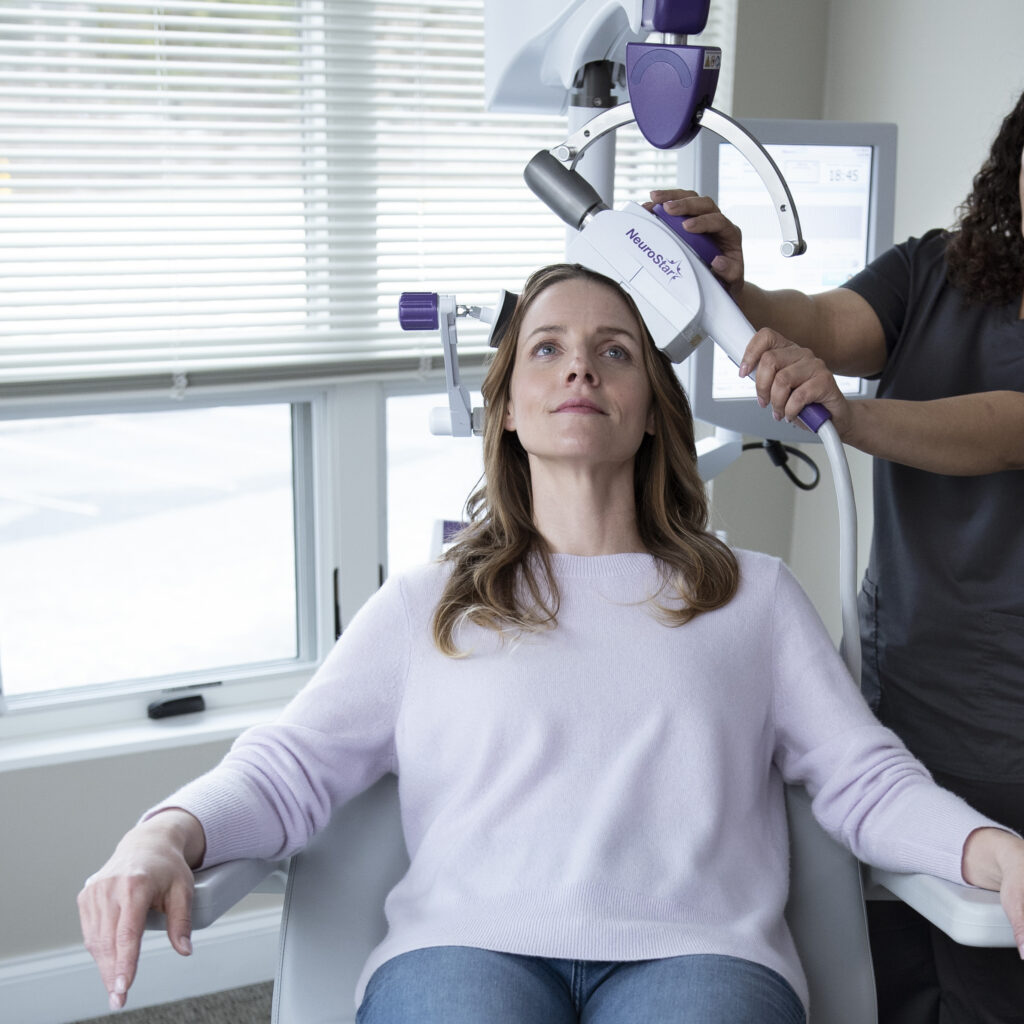
Menu

NeuroStar uses repetitive transcranial magnetic stimulation (rTMS) to target key areas of the brain that are underactive in people with depression. It is not ECT (electroconvulsive therapy).
While the exact cause of depression is not known, the leading scientific theory is that it is caused by an imbalance of the brain’s neurotransmitters, which are chemical messengers that send signals between brain cells.
During a NeuroStar treatment session, a magnet similar in strength to that used in a magnetic resonance imaging (MRI) machine is used to stimulate nerve cells in the area of the brain thought to control mood. These magnetic pulses may have a positive effect on the brain’s neurotransmitter levels, making long-term remission possible.


Before Treatment –
You’ll recline comfortably in the treatment chair. A small, curved magnetic coil will be positioned lightly on your head.
During Treatment-
NeuroStar delivers focused magnetic stimulation directly to the target areas of the brain. You’ll hear a clicking sound and feel a tapping sensation on your head.
After Treatment-
NeuroStar Advanced Therapy: Depending on your doctor’s recommendation, each treatment takes between 19 and 37 minutes.
-You can resume normal activities immediately.
-Because there are no effects on alertness or memory, you can drive yourself to and from treatment sessions.
-In-office treatment with NeuroStar TMS Therapy typically takes 19-37 minutes and is administered 5 days a week for approximately 6-9 weeks.*
What is Transcranial Magnetic Stimulation?
Does TMS hurt?
TMS is often described as an unfamiliar sensation. It may be uncomfortable but it should never be painful.
No. TMS Therapy involves a unique method of using pulsed magnetic fields for a therapeutic benefit. The intensity of the magnetic field is similar to that of an MRI. These techniques differ radically from the popular use of low-intensity, static magnetic fields. Those products deliver weak and undirected static fields that are incapable of activating brain cells. The activation and stimulation of brain cells are a crucial part of why TMS is so effective.
Phone (appointments): (480) 908-9993
Office Fax: 480-856-9069